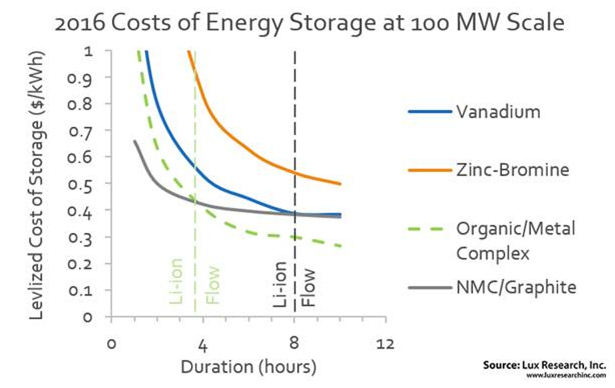Lithium- ion lead the energy storage but new contenders competitive for long durations
Lux research say that Lithium-ion devices continue to lead the energy storage race but the new contenders begin to compete for the long duration contests. A new analysis shows that Li-ion batteries will dominate the stationary energy storage market, though current generation flow battery technology has an economic case for certain very large and long- duration applications.
Lux Research Analyst Tim Grejtak said that Li-ion has a lower levelized cost of storage (LCOS) at most durations and system sizes, but the amount of space required starts to drive up costs at larger scales. As a result, there’s an opportunity for emerging flow battery technology, which can change this landscape by driving down costs.

Lux Research analysts developed new battery cost models based on size, duration, architecture and chemistry, and compared Li-ion and flow battery costs across a large parameter space to determine thresholds where given energy storage technologies are less expensive. Among their findings:
- Li-on retains cost edge – Li-ion beats the most popular vanadium-based flow battery technology on LCOS due to higher round-trip efficiency (83% vs. 65%). Li-ion also dominates the application space from 75 kW to 100 MW, and from 15 minutes of storage to eight hours, with costs above $0.37/kWh.
- New technology will change economics – New chemistries like Lockheed Martin’s metal complex chemistry, planned to debut in 2018, could make flow batteries competitive versus Li-ion batteries in the highly competitive 4-hour duration market, driving down costs of energy storage and opening up new markets. Current technology won’t get lower than $0.35/kWh.
- Diversification is key as price falls – Application stacking and multiple value streams will gain importance as energy storage costs fall to about $0.30/kWh by 2036. The lower cost will mean no single application market can bring enough revenue to make energy storage economically compelling.
Image Source: Lux Research
